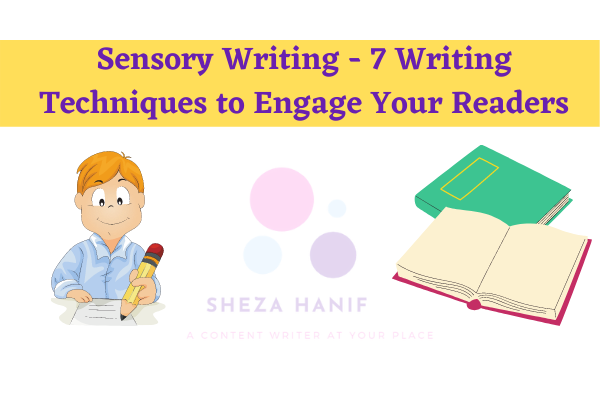What is sensory writing? When I opened my laptop at the Coffee Company last week, I overheard a snippet of conversation that had a strangely calming effect on me. A boy sitting next to me told a friend about his winter sport. But his story was not about skiing or pares-ski, he told about noises on the slopes, or rather, the lack thereof.
“Do you know that atmosphere that arises in the morning when a fresh layer of snow has just fallen? The snow muffles all the voices of other skiers, making it much quieter than usual on the slopes. It’s as if someone turned the volume down. ”
Because of his description, I was immediately on the ski slope with my thoughts. I could almost feel myself standing there in the morning sun, dropping my skis into the snow with a thud to put them on, hearing the muffled voices of other skiers.
I did not consciously think about what my neighbor said at the coffee table, but experienced it immediately. Not only did I see the story in front of me, but I also ‘heard’ the silence he described.
Sensory Writing
Activating multiple senses is an effective technique for drawing readers into your story – not just when you’re telling something, but also when writing articles, blogs or books.
We are often inclined to construct texts from images. We mainly describe what they see. But with that approach, your text remains one-dimensional. Your message only penetrates the visual imagination of your reader. If you appeal to multiple senses with your writing style, your text will also enter through other channels. You also stimulate parts of the brain that are normally controlled by smells, touch, sounds and taste buds. In short: your message becomes more powerful.
Read more:
Entry Level Copywriter Jobs: Let’s Talk About
9 Ways to Find Freelance Writing Clients Who Will Actually Pay You
6 unexpected ways you’ll benefit from writing content
The best authors and copywriters are therefore masters of sensory writing. Below is an overview with examples of 7 techniques to touch readers and customers by stimulating their senses.
1 – Sensory writing – Evoke memories
Your text gets a nostalgic atmosphere if, in addition to a visual description, you also make at least one allusion to a smell, taste, touch or sound. As a result, you almost automatically evoke memories among your readers, as scientific studies have shown.
The American writer Paul Auster shows in the beautiful Winter Log generate a master of nostalgia. His sensory style is so compelling that you feel like you are reliving your own childhood memories.
Your bare feet on the cold ground when walking to the window. You’re six. It’s snowing outside and the branches of the trees in the backyard slowly turn white.
The scent of thyme and lavender that rose around you as you walked through the fields bordering the house, the fragrant air, the strong air when the wind blew, the balmy air as the sun descended into the valley and the lizards and salamanders crawled out from crevices in the rocks to doze in the cozy warmth.
Of course, this happens not only in novels but also in copywriting. Take this text from Paturain.
Where Paturain is, you can taste the summer, you can smell the lavender, you can hear the crickets.
2 – Sensory writing – Cultivate emotion
This is one of the most used writing techniques in novels. With smells, tastes you evoke emotions much more directly than with visual descriptions alone. When British writer Julian Barnes introduces a character who is supposed to evoke disgust in his acclaimed novel As if it’s beyond js, he writes:
He was big, fleshy, and had a red face; I thought he was rude. Do I smell a beer there? That early? How could this man be the father of such an elfin daughter?
Jan Wolkers does much the same in Kort American when he confronts readers with a repulsive environment
Suddenly Eric smelled an odor of rotten food and urine. It was as if he tasted it on his tongue, as if it entered his throat and choked him.
This technique is also widely used in copywriting, although of course, it involves positive emotions, as in this text from the travel agency Eliza was here, which recommends holiday homes with smart texts.
Hmm… the sweet scent of fruit trees comes to me. I slowly walk through the beautiful garden of Baroni Nuovi which is full of almond trees, peach trees, pepper trees and olive trees.
3 – Sensory writing – Reinforce images with metaphors
A metaphor that contains taste, smell or touch makes every scene more catchy. These sensory metaphors have a direct impact on your reader’s brain, according to scientific research.
Here is an example of the acclaimed author Patrick Süskind in his highly sensory book Het Parfum (about a murderer who spares the smells of his female victims). Here Süskind describes a woman’s appearance by comparing her to honey, whirlwinds and whips.
The girl was indeed of exquisite beauty. She was that warm-blooded type of women that’s like honey, smooth and sweet and awfully sticky; who, with a viscous gesture, shake their hair once, control a slow lash of their gaze and space, standing calmly as in the eye of a whirlwind, apparently unaware of their own attraction, with which they express the passion and soul of men as well as attracting women irresistibly. She was young, very young, the excitement of her type had not yet turned creamy.
Metaphors are also indispensable in commerce, for example, well-selling books at Bol.com are called ‘runners’ and travel organization Shoestring calls offers ‘travel bangers’.
The Importance of Article Writing And How To Do It Effectively
“Never start a sentence with …” – 7 Writing Rules You Should Ignore
Writing an Introduction? This Step-by-Step Guide Will Help You
4 – Sensory writing – Use sensory verbs
You don’t always have to come up with a metaphor to make a sentence more catchy. Sensory verbs make every sentence more expressive without the need for comparison. Take this sentence in an article about toilets from the Volkskrant – maybe even a little too visual.
There are pros and cons to squatting.
Or this one, again from the Bol.com website.
A moment for yourself. Dive into these books.
5 – Sensory Writing – Address the sixth sense of your reader
You can appeal to one of the five senses in your text, but you can also appeal to something that is beyond the senses. This is a recognized way of generating interest in novels.
In Eyes of Fire, Stephen King arouses curiosity when he introduces a character who has a special kind of sense of touch. Andy McGee can empower his thoughts.
“Can I go upstairs? Just have a look? ”
“I can’t do it,” said the night watchman, but his voice suddenly sounded very uncertain.
Without thinking any further, Andy said rather softly, “Of course you can. I’m going to take a look and then you will no longer have problems with me. You won’t even remember being here. ”
Suddenly a strange feeling in his head: it was as if he had lashed out and shoved that elderly night watchman, not with his hands, but with his head. And the night watchman took a few steps back and didn’t interfere with the door anymore.
But appealing to a sixth sense also works with product descriptions. Samsung is touting the latest phone here with a Stephen King-esque phrase that promises something supernatural.
The camera that can immediately see what your eyes cannot see.
Inspired? Let me know your views in the comment section.


Great write-up, I¦m regular visitor of one¦s blog, maintain up the excellent operate, and It’s going to be a regular visitor for a long time.